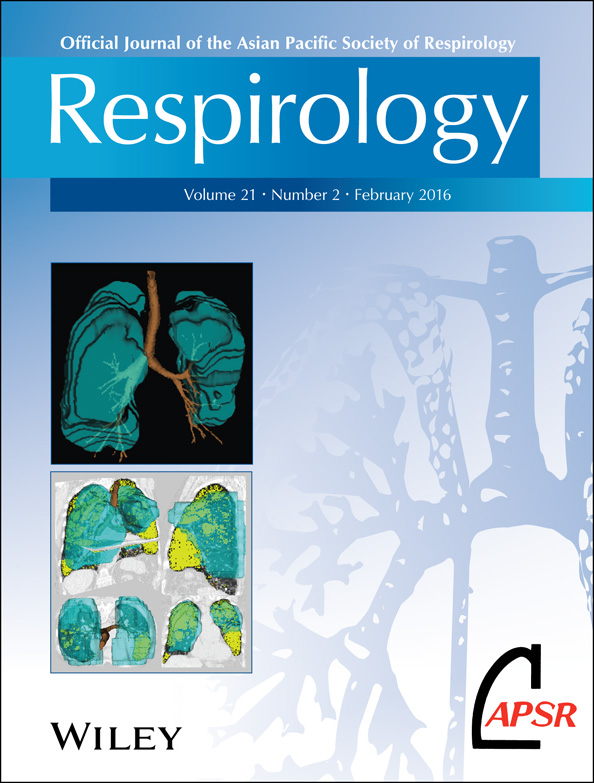Does continuous positive airway pressure therapy improve non-alcoholic fatty liver disease?
Abstract
There is evidence from animal model studies that chronic intermittent hypoxia may be associated with the development of non-alcoholic fatty liver disease (NAFLD), a condition that might lead to liver fibrosis and eventually cirrhosis.1 There are also observational studies in humans claiming an independent association between chronic intermittent hypoxia, one of the major pathophysiological consequences of obstructive sleep apnoea (OSA), and NAFLD. This is largely based on observations of a higher prevalence of NAFLD in patients with OSA compared to control populations,2 and correlations between the severity of OSA and parameters of liver injury.3 However, there is conflicting evidence that this association is truly independent from important confounding factors such as, for example, obesity.4
If there is indeed a causal association between OSA and early stage liver injury, then one would expect that successful treatment of the causing agent (i.e. OSA treatment with continuous positive airway pressure, CPAP) would lead to improved parameters of liver injury. Uncontrolled studies looking at the effect of CPAP on liver biomarkers reported improvement of liver enzyme levels and steatosis as assessed by computed tomography scans, after several months and years of treatment, respectively.5, 6 Randomized controlled trials evaluating the effect of CPAP on liver transaminases failed to confirm this hypothesis7, 8 In the trial by Kohler et al.7, 102 patients with moderate-to-severe OSA were either treated with therapeutic CPAP or subtherapeutic CPAP for 4 weeks. Despite evident treatment effects on OSA severity, daytime symptoms and cardiovascular outcomes,9 there was no beneficial effect of therapeutic CPAP observed on alanine aminotransferase (ALT) and aspartate aminotransferase (AST) when compared to subtherapeutic CPAP.7 In a cross-over trial of therapeutic CPAP versus subtherapeutic CPAP for 2 months each and with a 1-month washout period, Sivam et al.8 did also not observe an improvement of AST, ALT, γ-glutamyltransferase, bilirubin levels and liver fat quantified by magnetic resonance imaging and magnetic resonance spectroscopy. There was, however, an isolated reduction in alkaline phosphatase levels with therapeutic CPAP, the significance of which is questionable in absence of an effect on other liver parameters. In concordance with the latter study, two further randomized controlled trials evaluating the effect of CPAP on liver fat using imaging techniques found no effect of CPAP after 12 and 24 weeks of treatment.10, 11
So what does the paper by Jullian-Desayes et al.12 published in this issue of the journal add to the literature? Importantly, this is one of the few papers on this topic that reports data stemming from three randomized controlled trials including a substantial number of patients. Because many patients with NAFLD have normal transaminase levels, the authors thought to apply a more comprehensive, yet more sensitive, non-invasive method to assess liver injury by using the FibroMax score as the primary outcome. FibroMax consists of three subscores (Steato Test, Nash Test and Fibro Test) and seems to predict liver steatosis, non-alcoholic steato-hepatitis and fibrosis, thus expanding the information on liver function and inferred structure, compared to an isolated measurement of liver transaminase levels alone. These scores are all based on variably weighted blood levels of some or all of the following: alpha2-macroglobulin, haptoglobin, apolipoprotein A1, total bilirubin, γ-glutamyltransferase, fasting glucose, triglycerides, cholesterol, ALT and AST. Patients with OSA (about 40–50% of which had abnormal score values, despite normal liver enzyme levels) were randomized to either therapeutic or subtherapeutic CPAP for 6, 8 or 12 weeks in the respective trials. In total, 103 patients were included in the intention-to-treat and 84 in the per-protocol analysis. Therapeutic CPAP did not improve the FibroMax score or any of the subscores, either in the intention-to-treat or in the per-protocol analysis. Adjusting the treatment effects for baseline values of liver injury, obesity, CPAP compliance and OSA severity did not influence the results. Jullian-Desayes et al.12 provide a number of possible explanations as to why this study might have been inappropriately negative, including the notion that the treatment duration was probably not long enough for changes to be observed, and that the extent of intermittent hypoxia was mild in most of the patients. Yet there have been uncontrolled reports of reduced AST levels after a single night of CPAP treatment in patients with OSA.5 It should also be pointed out that the CI of the change due to CPAP for the FibroTest, for example, is approximately 25–30% of the baseline value, and thus a change of a smaller magnitude than this would not have been excluded.
One further possibility not mentioned in the paper is of course that OSA is not causally related to liver injury, and thus CPAP treatment would not be expected to have an effect on the liver. Taking into account that so far all randomized controlled trials which have evaluated the effect of CPAP on measures of liver injury found no beneficial effect, it seems at least likely that OSA does not play a major role in the development and progression of liver disease.




